#tiger squadron
Explore tagged Tumblr posts
Text
Afterverse Studios Staff Announcement
Afterverse studios (aka Baelpenrose and Canyouhearthelight/areasontobreathe) maintains a variety of ties with talented artists, writers, beta-readers, sensitivity readers, etc.
Due to patterns of behavior we observed both on and offline, we have chosen to cut ties with quantumized-insanity (aka fandomized-insanity and all past/future alternative accounts), formerly one of our beta readers. We do not make this decision lightly.
We made the decision during October of last year, and did not publicly comment until now because we were uncertain that we wanted to take that step and risk encouraging rumors about her. However, given the events that caused us to make the decision to cut ties to begin with, we eventually came to the decision that it would create liabilities for our team to not publicly end our association with her.
#afterverse#writeblr#writerscommunity#arcadian inquisition#nihilus rex#project praetorian#the miys#canyouhearthelight#baelpenrose#tiger squadron#under avandra's eyes
2 notes
·
View notes
Text
WEEEE'RRRRRE BAAAACK!
After 56 days, Afterverse Studios (myself and @baelpenrose) is excited to announce that we are able to resume posting again. Be on the lookout for Project Praetorian Ch. 27 tomorrow, and Nihilus Rex on Friday, both back at their regularly scheduled times.
#afterverse#the miys#arcadian inquisition#tiger squadron#under avandra's eyes#lydia woke up#machine flesh#it runs in the family#science fiction#humans are weird#original writing#post apocalypse#hopepunk#solarpunk#cyberpunk#horror#fantasy#found family
5 notes
·
View notes
Video
Gripen by Treflyn Lloyd-Roberts Via Flickr: Czech Gripen 9242, wearing a special 211 Squadron Tiger scheme, performs a low, fast pass over Fairford during its rehearsal for the 2024 Royal International Air Tattoo. Aircraft: Czech Air Force Saab JAS 39C Gripen 9242. Location: RAF Fairford, Gloucestershire.
#Czech#Gripen#9242#wear#special#211#Squadron#Tiger#tail#scheme#perform#low#fast#pass#over#flying#display#Fairford#during#rehearsal#for#2024#Royal#International#Air#Tattoo#RIAT#airshow#show#military
4 notes
·
View notes
Text
Tailspin Tapestries: The Colorful Faces of WWII Aircraft 🃏
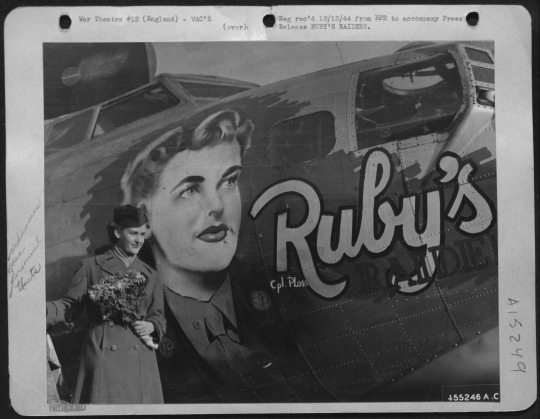


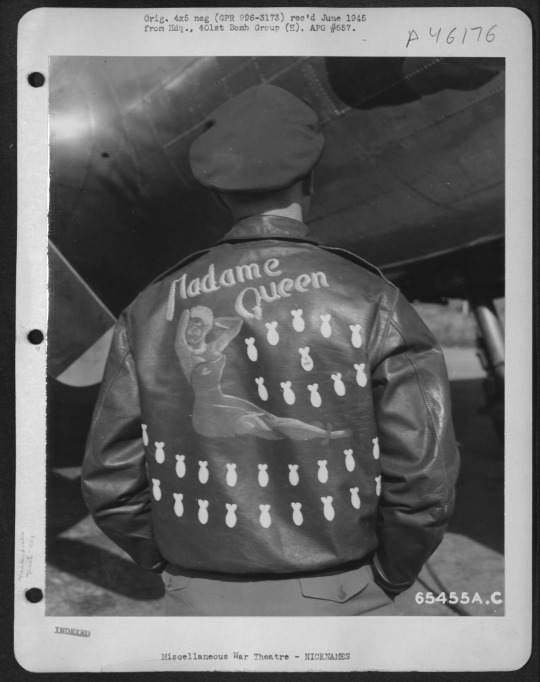
Nose art, the decorative painting or design on the fuselage of military aircraft, has a storied history that peaked during World War II. This vibrant, often cheeky artwork served as a morale booster for the crew, adding a personal touch to the grimness of war and providing a sentimental tie to the home they were fighting to protect. The practice traces its origins to Italian and German pilots in World War I, but it was during World War II that American airmen embraced this form of expression with unparalleled creativity.

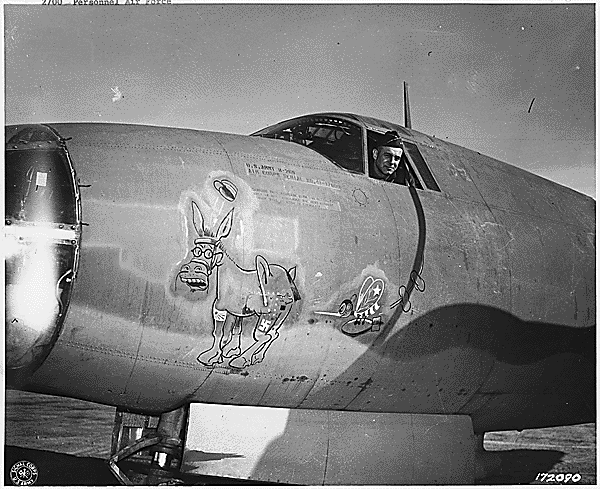
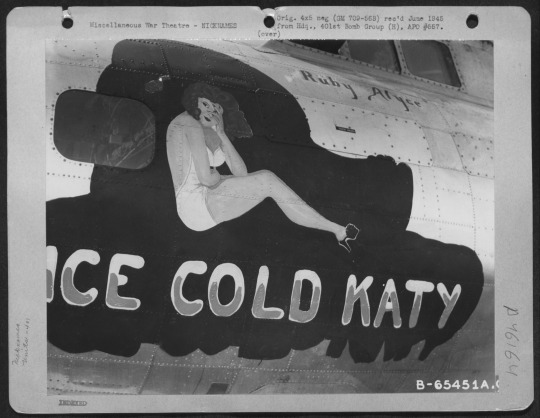

World War II represented the golden age of nose art, with American crews stationed in Europe and the Pacific leading in creativity. Artworks ranged from ferocious animals and cartoon characters to pin-up girls and patriotic symbols, each with a unique name that reflected the aircraft's character, the crew's aspirations, or an inside joke among the squadron. Names like "Memphis Belle," "Enola Gay," and "Sack Time" became as legendary as the aircraft themselves, symbolizing the spirit of the crew and their mission.


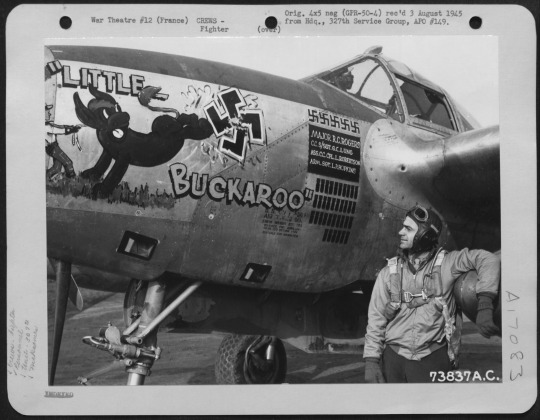
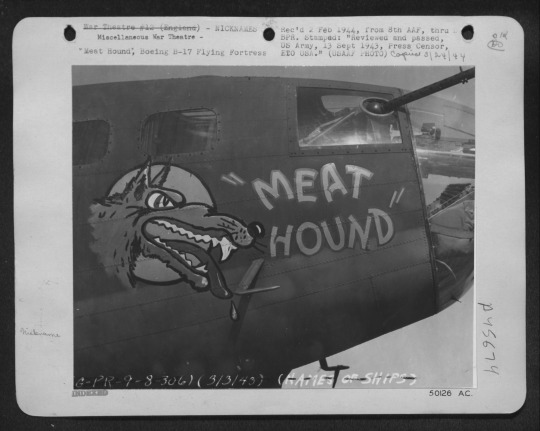
Nose art was crucial to boosting morale among crew members, providing a sense of individuality and ownership over their aircraft in an otherwise regimented and dehumanizing environment. This artwork fostered an emotional attachment to their planes, with each piece a vivid manifestation of the crew's bond. It represented a piece of home and personality in foreign skies, a reminder of what they fought for and the camaraderie that sustained them.
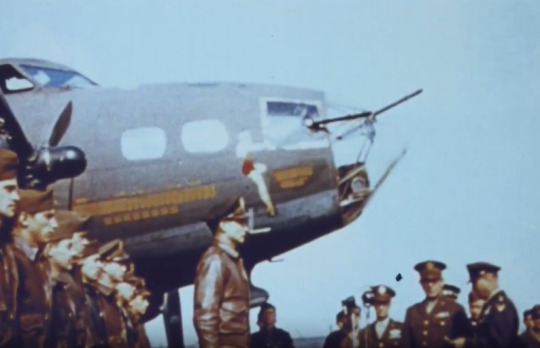

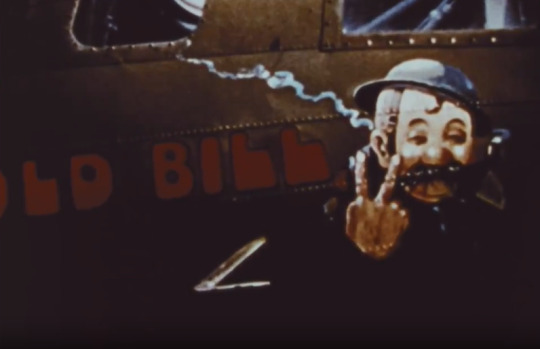
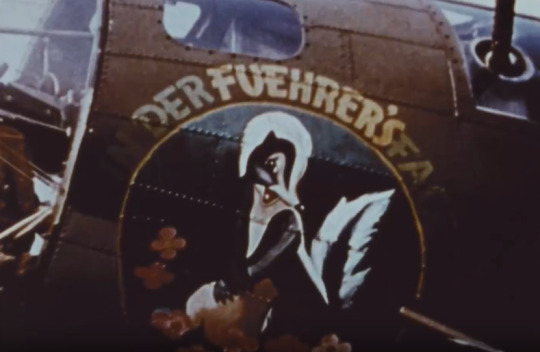

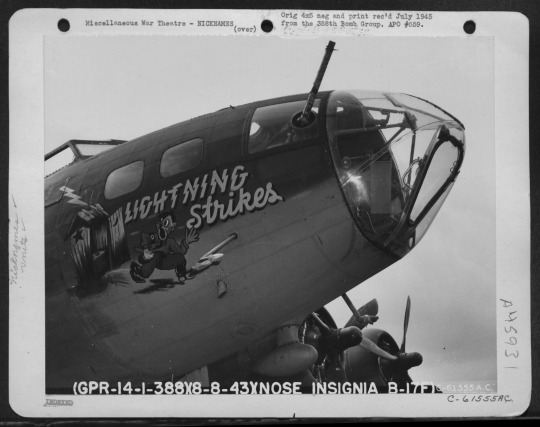

The subject matter of nose art varied widely, reflecting diverse personalities within the crews. Cartoons and comic characters like Donald Duck and Bugs Bunny were favorites for their humor and relatability. Artwork also featured fierce sharks, tigers, and eagles, symbolizing the aircraft and crew's power and aggression.
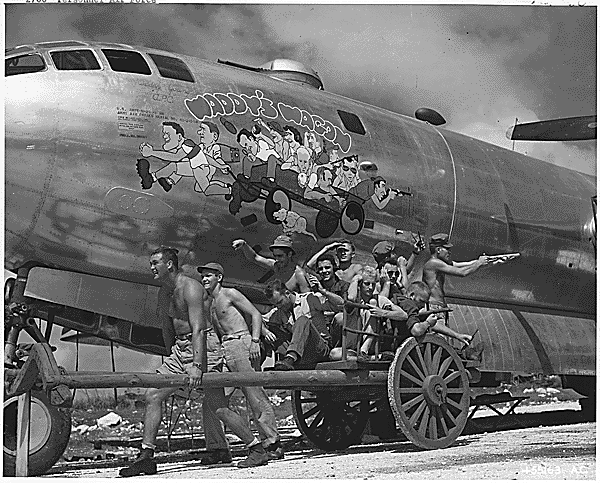

Many nose art pieces were painted by the crew members themselves, though some squads had designated artists. Individuals like Don Allen, who painted nearly 100 pieces of nose art, were celebrated for their contributions. Using whatever materials were at hand, these artists created masterpieces under challenging conditions, showcasing remarkable ingenuity and talent.

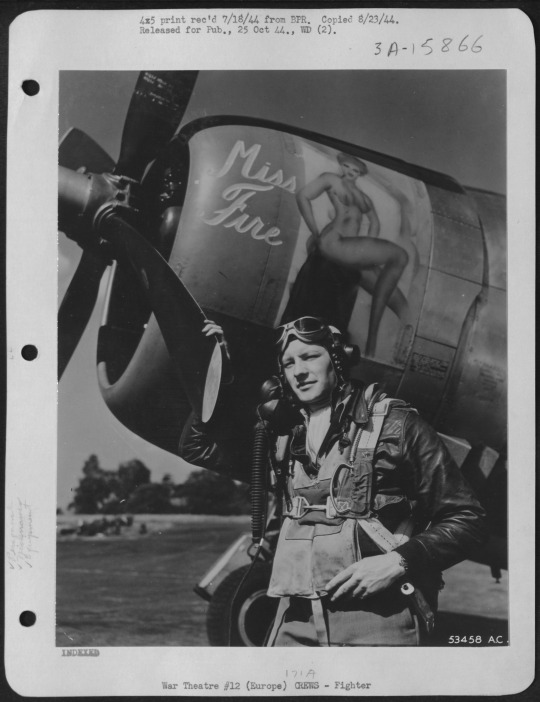
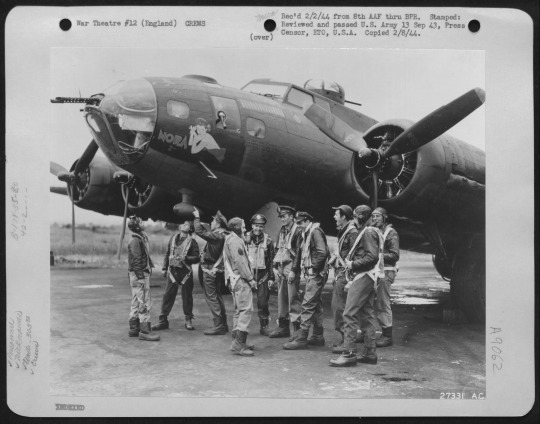
The practice of nose art declined after World War II, largely due to stricter military regulations and the evolving nature of warfare. However, its legacy endures, captivating historians, veterans, and enthusiasts. World War II nose art remains a powerful reminder of the human element amidst war's machinery, a colorful testament to the resilience, creativity, and spirit of those who served.
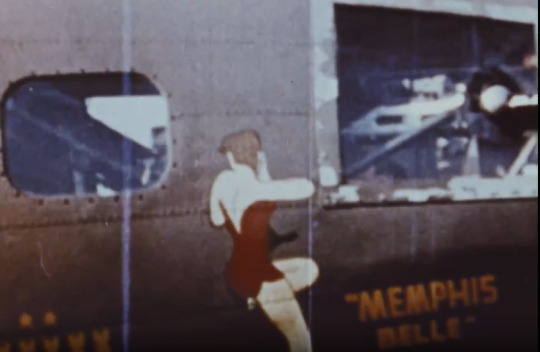




The National Archives holds a treasure trove of photographs featuring this iconic nose art, often discovered in ordinary crew photos where the art itself isn't the primary focus of the image. This creates a fascinating treasure hunt for enthusiasts and researchers alike, offering glimpses into the past where this artwork accompanies stories of bravery, camaraderie, and the personal touches that made these aircraft more than just machines of war.
More resources on the National Archives website and Catalog:
https://nara.getarchive.net/topics/nose+art https://www.archives.gov/research/military/ww2/photos
590 notes
·
View notes
Text

P-40 Warhawks of the Flying Tigers' 3rd Squadron, Hell's Angels, over China, photographed in 1942.
297 notes
·
View notes
Text
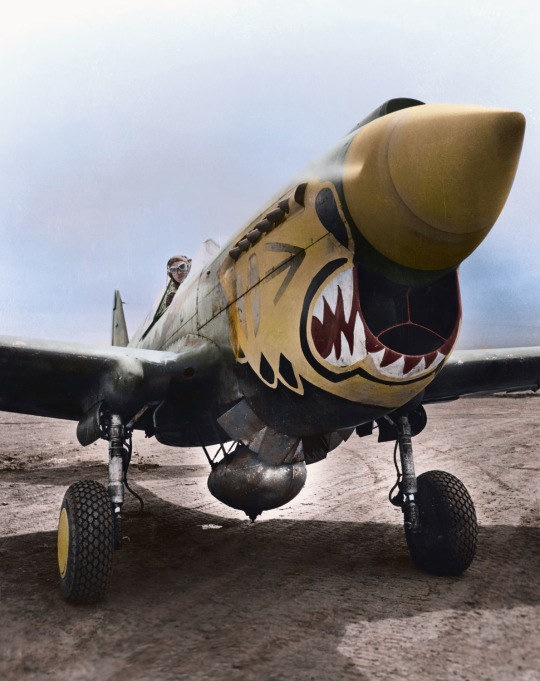
USAAF P-40 Warhawk of the 11th Fighter Squadron, 343rd Fighter Group in Alaska, 1943
➤➤ P-40 - The Flying Tigers Story VIDEO: https://dronescapes.video/FlyingTigers
#youtube#aircraft#airplane#aviation#dronescapes#military#documentary#ww2#wwii#aviation history#Histo#history#p 40 warhawk#Warhawk#China
414 notes
·
View notes
Text

The U.S. Navy aircraft carrier USS Independence (CVA-62) photographed in April 1959, during her shakedown cruise.
Planes on deck include the following types from Carrier Air Group 7 (CVG-7): Douglas A3D "Skywarrior" (including BuNo 135420, an A3D-1), Heavy Attack Squadron VAH-1 Smokin' Tigers; Douglas A4D-2 "Skyhawk" (including BuNos 142708 and 142712), Attack Squadron VA-86 Sidewiders; McDonnell F3H-2 "Demon" (including BuNos 143434, 143447, 143448 and 143474), Fighter Squadron VF-41 Black Aces; Vought F8U-1 "Crusader" (including BuNos 145386 and 145429), VF-11 Red Rippers. Note paint pattern on the carrier's landing path.
69 notes
·
View notes
Text
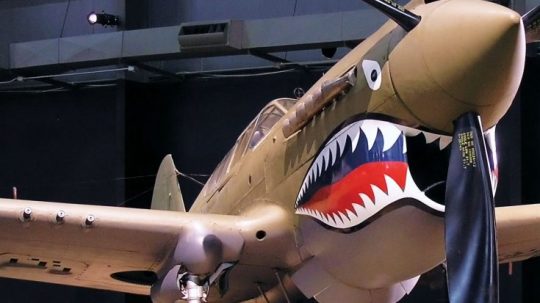
P-40’s Shark Teeth Didn’t Originate From The Flying Tigers...Here’s the story....

The AVG Flying Tigers got the idea after seeing a newspaper picture of a P-40 from the No. 112 Squadron of the Royal Air Force. Fighting in Egypt, Sudan, Greece and Crete, they were one of the first squadrons to fly the P-40 and painted them with the shark mouth because they thought the intake looked perfect for it. That’s why they were nicknamed the “Shark Squadron.” Although the idea was theirs to paint the Warhawk, the graphic was not.....

The first documented use of the Shark Teeth nose art was by the Zerstörergeschwader 76 group of the Luftwaffe. Formed in 1939, they flew Bf 110Cs and it was them who were first seen painting their noses with the iconic shark teeth logo. They didn’t have the eyes on them as that was added by the RAF, but the shark mouth appears to be their original idea.
#Nose art#shark mouth#shark teeth#P-40#Warhawk#Aviation history#RAF#AVG#Luftwaffe#nose art history#Bf 110
163 notes
·
View notes
Text

#TomcatTails
#TomcatTuesday
That Time I Bagged an F-16
I’ve written quite a bit about the challenges when flying the F-14A Tomcat against the F-16 Viper. It’s a very formidable Fighter, highly maneuverable, light weight, nearly 1 to 1 thrust ratio, fast roll rate, 9+ G capable, etc., etc. In contrast, the F-14A is much larger, heavier, .75 to 1 thrust ratio at best, slower roll rage, 7 G capable, etc., etc. It’s similar to two boxers, one with longer reach, more muscles, and better footwork; you know how it’s normally going to end. You’ve also heard me quote the Red Baron about the importance of “the man in the box”, vice the box itself. That will always be true but in reality, some boxes are REALLY good and can make even a mediocre pilot fairly formidable. At any rate, enough excuse making.
As one gets better in the air-to-air arena over time, you learn your own personal limitations but also discover a few of your own techniques that seem to work for you. The more time you spend on it, your BFM (Basic Fighter Maneuvers) get better and better and your skills improve, just like any endeavor (mental or physical or both). Wikipedia, for what it’s worth, has a pretty good section describing BFM in great detail and defines them as:
“The tactical movements performed by fighter aircraft during air combat maneuvering (ACM, also called dogfighting), to gain a positional advantage over the opponent. BFM combines the fundamentals of aerodynamic flight and the geometry of pursuit, with the physics of managing the aircraft's energy-to-mass ratio, called its specific energy.”
OK, pretty good start. The advanced stuff comes with practice and experience and instruction by the highly qualified bogey drivers at the Aggressor squadrons and for the purposes of this #TomcatTail we’re talking about the VF-126 Bandits at Miramar, CA.
When you’re between cruises and deployments, Fighter Squadrons have time for Unit Level Training (ULT) that doesn’t require the rest of the air wing to support. This is great since the squadrons are pretty scattered (Tomcats/E-2s at Miramar, S-3s at North Island, Hornets in Lemoore, A-6/EA-6 at Whidbey Island). This is also the time you take on some new Nuggets and focus on the basic A/A and A/G skills. One way we did this as a community was an annual flight line wide contest known as “Fighter Derby”. While the specific rules escape me (it WAS 30 years ago, please), it’s essentially hosted/run by the Bandits and all squadrons field 3 or 4 sections to compete against the rest of the squadrons on the base.
As you may imagine, something like this got HIGHLY competitive. As such, so was Bombing Derby that measured your A/G skills with precise times on target, etc. There were a number of other flight line contests and awards to be won at Miramar that all factored into the annual competition to win either the coveted “Battle E” for excellence or the even MORE coveted “Mutha” trophy for the most shit hot, coolest squadron on the flight line. The Mutha story would take a book, so I’ll leave it to another time, but that was THE trophy to win.
Our squadron, the VF-24 Renegades, began to prepare for the contest by focusing strictly on ACM for a couple weeks. We assigned crews to their specific sections (two planes are a section, four planes are a division). Just my luck, I got paired up with our only former Bogey Driver from VF-126, “Space”. Space was one of those rare salty dudes that just seemed older than he should be and spent a long time as a Lieutenant, eventually got selected for Lieutenant Commander, but likely wasn’t going much beyond that. That’s not a dig by any means, he just managed to stay in the cockpit his entire career and didn’t get those “checks in the block” that put one on track for higher ranks.
He was a WIZARD with the Tomcat because, as you’ve heard me say often, them damn Bogey Drivers were just SO good at ACM in any platform they flew. He had F-16N Viper time, A-4M Skyhawk time, and F-5E Tiger II time. He could transform the often lumbering F-14A Tomcat into quite the nimble minx (mostly) and would routinely beat up anyone in the squadron. He knew when to control energy to keep the fight going, when to transition into a vertical looping fight or a slow flat-scissors fight, and when to sell the farm (knots) and take a lethal shot. All in all, that’s a GREAT guy to go into Fighter Derby with!!
The day comes for VF-24 to throw their sections at the Bandits and it’s (naturally) beautiful weather. As I recall the scenario, we’d meet in the Restricted Area 2301 West to the west of MCAS Yuma. That’s a huge training range with a TACTS range inside of it (tracked your aircraft) as well as a great target complex called “Cactus West”. A little Fighter lore; years ago the VF-2 Bounty Hunters (callsign “Bullet”) lost a jet out there due to a departure and flat spin. It impacted in a mountain pass in the Barry Goldwater Range and to this day, the site is called “Bullet Pass.” (aircraftarchaeology.com/f14goldwater.h…)
Space and I launch out of Miramar, as ready as we’ll ever be (me at least). After our transit to R-2301 we check in with Range Control and check in with the Bogeys. They were already on-site as they’re doing one engagement per section (you get one run) so they can cycle through 2 or 3 sections pretty easily before they have to RTB to Miramar. Today, a Viper and a Dog (A-4) are on the menu. Or is it going to be Tom Kitty for lunch? We’ll see.
The basics here are that you start with a 30-mile set to give both sections time to acclimate and maneuver as needed to provide the most advantageous merge. The overall score is determined by time-to-kill and if you lose anyone. Key to note is that this is a training evolution. The Bogeys are going to give you a HARD problem, but not an IMPOSSIBLE problem. They will fight you hard but they will not just spank the shit out of you. You’re being judged on how you engage, how you react to perceived bogey mistakes, if you make any mistakes, etc. Again, I will be a hard fight but you can both survive. The question is can you kill them faster than everyone else?
So the set up is ready and we call “Fights On”. Space is on the left (lead) and I’m on the right in 1 mile combat spread, stepped down about a thousand feet (don’t be co-altitude, too easy on the bogies). As we march in, we get radar on the Bogies. At this point we can see two, about a mile apart but don’t know which one is which, Viper or Dog. What you DON’T want to do here is let them “bracket” your section (where both pass outboard me and Space….kiss of death) and you don’t want to meet off center so either Space or I go down their middle; also not good. Best scenario is you bracket THEM, and Space on the left turns right to attack my guy with angles and me on the right, turn left to engage HIS guy with angles. Classic “switch”. Break the hands/pens out, take a minute and think that through…..I’ll wait.
Once you’re within 10 or 15 seconds of a merge, you’re not allowed to try and cross over someone’s nose to change the pass from left-to-left to right-to-right because you could screw it up and collide nose on. Not good (but frankly not painful as you’d never know it happened). As luck would have it, we face the Kobayashi Maru; we’re getting bracketed and can’t maneuver to change it. Wonderful. And I get the Viper……down my right side. Nuts.
As I’m merging with the Viper I take a peak at the Dog passing down Space’s left…..oooh, he’s going nose high right. Towards me but nose up. I have several options, mostly bad, but one that I think might work. Space follows him nose up near vertical to get separation, the Viper turns across my tail and starts pulling for Space, and I elect to roll right and pull OUT of the fight and away from the Dog. Strange, but it works out. You’ll see.
So I’m pulling for my life to get back in the fight, the Dog is struggling to catch up since I got such separation, and the Viper is chasing Space up hill and left. After a 180° I then pitch it pure nose low (straight down) and roll my lift vector to where I THINK Space and the Viper are going to be in about 20 seconds and pull….HARD. The lift vector is an imaginary plane coming out the top of my jet and it’s where you’re pulling to in space. Did I say I was pulling HARD?
After a few seconds, the gray-out starts to impact my vision. When you’re pulling that many G's and you’re body is fighting 7 times the force of gravity in sometimes awkward positions in the cockpit, it’s not hard to let the G get in front of you. You’re doing your “HOOK” maneuver, straining your stomach to keep blood in your head and your G-suit is full inflated, but sometimes it’s not enough. If you’re sitting there looking straight ahead, imagine your peripheral vision going gray at the far left and right and then slowly getting more gray toward the middle, and eventually it takes a circle shape where 80 or 90% of your view is now gray. That’s gray out. The harder you pull the smaller that circle gets. If you ease off, the circle gets bigger. You’re conscious, you talking to your RIO (in this case “Watts”) and you’re flying your jet, you just can’t see all that good.
The timing wasn’t quite right to ease the pull yet; that’s the instinctual part of ACM. You just KNOW how fast you’re turn rating across the sky and you just KNOW when you’ll be nose on the bogie based on where he was and what he’s was doing 30 seconds ago. You just KNOW. I can’t really explain it past that.
I keep the pull on and I’m mostly grayed out for a few more seconds. And then it’s time. Relax the pull and Voila!, I’m in a nose up position looking at beautiful blue sky. And wonder of wonders there’s a Viper in my windscreen and his left rear quarter is showing me some leg. He’s closing in on a shot on Space but my Sidewinder seeker head is already staring to growl. Quick finger fire to get the ‘Winder to lock and “Fox 2 the Viper in a left turn…….kill Viper.”
The Dog is still a bit behind me and not nose on and Space keeps his hard turn in and gets nose on the Dog pretty quick. I come hard left now to get the Dog to chase and he does. A few seconds later Space bags the Dog with a ‘Winder at about a mile. “Knock it off” and head home for a quick debrief and probably beers at the O’Club. That tended to be the default at Miramar.
We didn’t win Fighter Derby that year but our flight did reinforce a few key lessons:
1. I’d rather be lucky than good.
2. Even a blind squirrel finds a Viper once in a while.
@RSE_VB via X
28 notes
·
View notes
Text
Idea: Ghost Crew Ghosts au
Hera: World War II pilot. Fell off the balcony at a party and her ghost power is flight
Chopper: Sabertooth tiger. The oldest of the ghosts. Struck by lightning and controls electricity. Indirectly responsible for Ahsoka being able to see ghosts
Kanan: killed by being mistaken for Bigfoot on a camping trip in the 1980’s. Ghost power is temporary teleportation
Zeb: Revolutionary War captain for the continental army, died trying to rescue a mysterious informant.
Kallus: British Army officer, died when caught leaking information to the contental army. Stays in a shed on the property with Grint and Aresko
Sabine: Anti war protester in the 1970’s, killed after a disagreement with Ketsu. Has the power to make paint appear on the walls
Ezra: Died in a skateboarding accident a few years ago, ghost power to communicate with animals (living and ghost)
Lando: 1950’s mob boss, died after being betrayed by other mobsters, can momentarily become tangible
Attolon Manor: the au’s version of woodstone, left to Bariss and Ahsoka by Ahsoka’s mysterious uncle Plo.
Barris: A doctor trying to establish her own practice
Hondo: A petty criminal and old frenemy of Lando. Died of accidental poisoning after inviting himself to one of Bariss and Ahsoka’s parties
Ahsoka: A freelance mechanic trying to open a bnb
Phoenix squadron: A group of soldiers from the war of 1812 who died from scarlet fever before they could fight. They mostly keep to the basement except for Mart who ventures upstairs every so often.
AP-5: a greyhound dog and a recent ghost. Chopper’s involvement is suspected
Wedge Antilles: The ghost haunting the attic. A distant relative of Ahsoka’s who died in a burglary in the 80s’s
23 notes
·
View notes
Text
Afterverse studios (aka Baelpenrose and Canyouhearthelight/areasontobreathe) maintains a variety of ties with talented artists, writers, beta-readers, sensitivity readers, etc.
Due to patterns of behavior we observed both on and offline, we have chosen to cut ties with quantumized-insanity (aka fandomized-insanity and all past/future alternative accounts), formerly one of our beta readers. We do not make this decision lightly.
We made the decision during October of last year, and did not publicly comment until now because we were uncertain that we wanted to take that step and risk encouraging rumors about her. However, given the events that caused us to make the decision to cut ties to begin with, we eventually came to the decision that it would create liabilities for our team to not publicly end our association with her.
#afterverse#the miys#arcadian inquistion#tiger squadron#tiger squadron next generation#under avandras eyes#nihilus rex#writeblr#writing community
0 notes
Text
Learning to Fly: Ripples Make Waves Chapter One
“Chief, the Dancing Tiger-Seal sent word of a solitary Fire Nation ship sailing nearby. They want to know how to proceed.” Hakoda turned from the map on his wall, sharing a concerned glance with Bato at his side. After the fleet’s successful attack on a naval squadron, they’d raided the defeated ships’ intelligence before sinking them. The larger fleet the squadron was part of wasn’t scheduled to be in the area for another week. In the meantime, Hakoda and the rest of the Southern Water Tribe fleet were scattered and would soon be reconvening in another sea. “Send reply to not engage. Try to stay out of sight, but if spotted, retreat. We don’t want to draw attention to our movement before the squadron’s defeat is discovered.”
It's been two years since Zuko was banished and he is unrecognizable from the lonely boy who confidently declared his intent to bring the Avatar home in chains. His new goal of ushering in a new age of airbending should be impossible, but the friendships and connections he has made in his travels very well might make it possible.
The first step in this new leg of his journey? A chance encounter with the Southern Water Tribe. (Take pity on poor Iroh's heart, he might not survive the stress.)
.
If you're curious how Zuko's ended up here, start Learning to Fly from the beginning and join Zuko on his journey to Avatar Yangchen fanboyism
50 notes
·
View notes
Note
So, Uncle Sam, you ever work with either G.I. Robot? A lot of people have been re-examining him right now due to that fictionalization of his time on the Creature Commandos.
US: I did rather enjoy that cartoon. Me: You want cartoons? US: You know of a better way for me to have spent the last 250 years of my time? Me: Touche. So, the robot? US: Met him...would have been very late in '44, that god forsaken winter in the Ardennes. Me: The Battle of the Bulge? US: That's the one. It was really the last hurrah of a lot of us in Europe. My group were the representatives from the squadron. There was of course GI Robot, the Blackhawks, all of us attached to trying to hold back the Axis' last superhuman bully boys. We got backed up by the toughest roughnecks the Allied armies had at that point. Me: Anybody with even passing military knowledge knows the name Sergent Franklin Rock of Easy Company. US: The stories don't do them justice. Not by a long shot. I've never seen a squad of men act so casually like they were either bulletproof, or couldn't care less that they weren't. I could kick a King Tiger like a soccer ball and I was still more scared of the things than those men seemed to be. Me: Especially given the pitch of the battle. US: They called it the Battle of Ragnarok Wood. Every last "ubermensch" the Germans had up their sleeves tossed out to try and break the bulge and push the Allied forces back. One finaly act of denial by a senile and psychotic Nazi leadership while the Reds closed in on Berlin from behind. Me: Must have been quite a sight. US: A turkey shoot more like. Every one of those rat bastards was on their last leg and couldn't do much more than hobble on it. Me: Not the kind of climax people would image then? US: Not rightly, no. The only things I can truly remember is Phantom Lady doing something VERY unladylike to the original Captain Murder and Sgt Rock calling Captain Nazi every four letter word in the book before parking a tank on top of him. Me: And the robot? US: Whatever that thing was programmed for, its best use was as a blender. And I will leave it at that.
#dc#dcu#dc comics#dc universe#superhero#comics#tw unreality#unreality#unreality blog#ask game#ask blog#asks open#please interact#worldbuilding#uncle sam#usqna#gi robot
20 notes
·
View notes
Text

1941 10 02 Eagle's Prey - Roy Grinnell
I found a treasure trove of Roy Grinnell paintings, I am doing my best to crop, resize and photochop them to post them here as soon as I can, so apologies for the late arrivals that should have belonged into the 1941 year previous series. It's also a break for the non stop succession of P-40 pictures from the Flying Tigers period.
All of the Grinnell paintings before 1942 will be posted in due turn sometime next year when I end the present cycle.
RAF Station North Weald had been fogged in all the latter part of September 1941, so much so that the senior pilots of 71 Squadrons A Flight were given a few days leave. As the weather cleared on 2nd October, Squadron Leader Stanley T. Meares took a flight of newer members on a combat air patrol over the English Channel. Newly-assigned Pilot Officer Carroll W. red McColpin, was flying as Mearess wingman in his Spitfire Mk VB, coded XR-Y. At approximately 1340, McColpin spotted 18-20 Me-109Fs a few hindered feet below, and called out the bogies to Meares. As they dived to the attack, Meares fired on the nearest 109. McColpin followed, firing a half-second burst from under 50 yards. The German fighter burst into flames. Then, as McColpin related it, I broke away to port and found myself in position for an attack on another 109, so I gave him a burst. He pulled up and dived with smoke pouring out. I thought I saw the pilot bail out. The plane was seen to hit the ground. I was another Me-109 below, dived on him, and followed him down to 3,000 feet, where I have him a one-second burst. He never pulled out, and he hit the deck as I pulled up
20 notes
·
View notes
Text





46+38 | 1990 | Panavia Tornado ECR (51. Tiger Tornado Livery) German Air Force - 51. Squadron, Büchel Air Base (ETSB)
#military#aircraft#air force#us air force#fighter jet#aviation#fighter plane#usaf#plane#us navy#german air force#german army#germany#aviation photography#aviation history#military aviation#panavia tornado#51. Tiger Tornado Livery#my own shot#jet plane
40 notes
·
View notes
Text

Sato Force - Tiger Squadron
teepublic.com/user/anyadoesai
93 notes
·
View notes